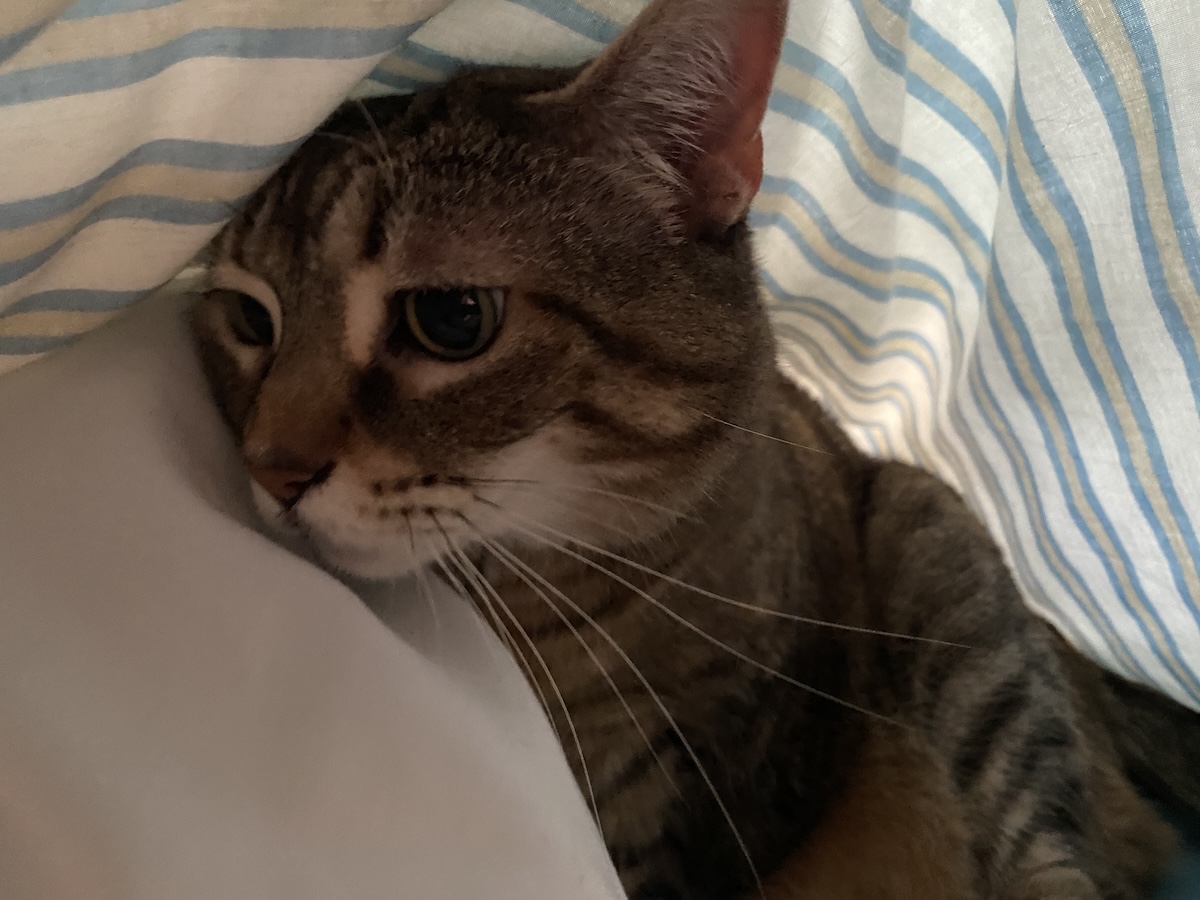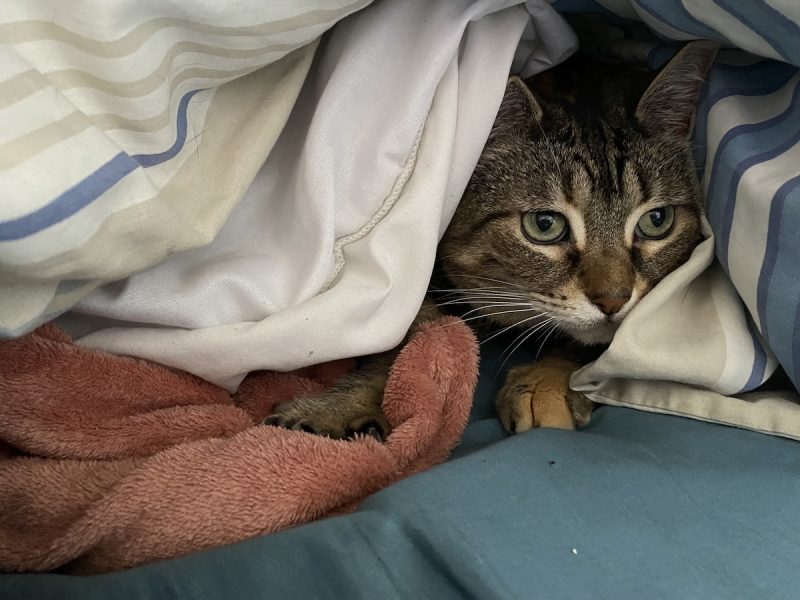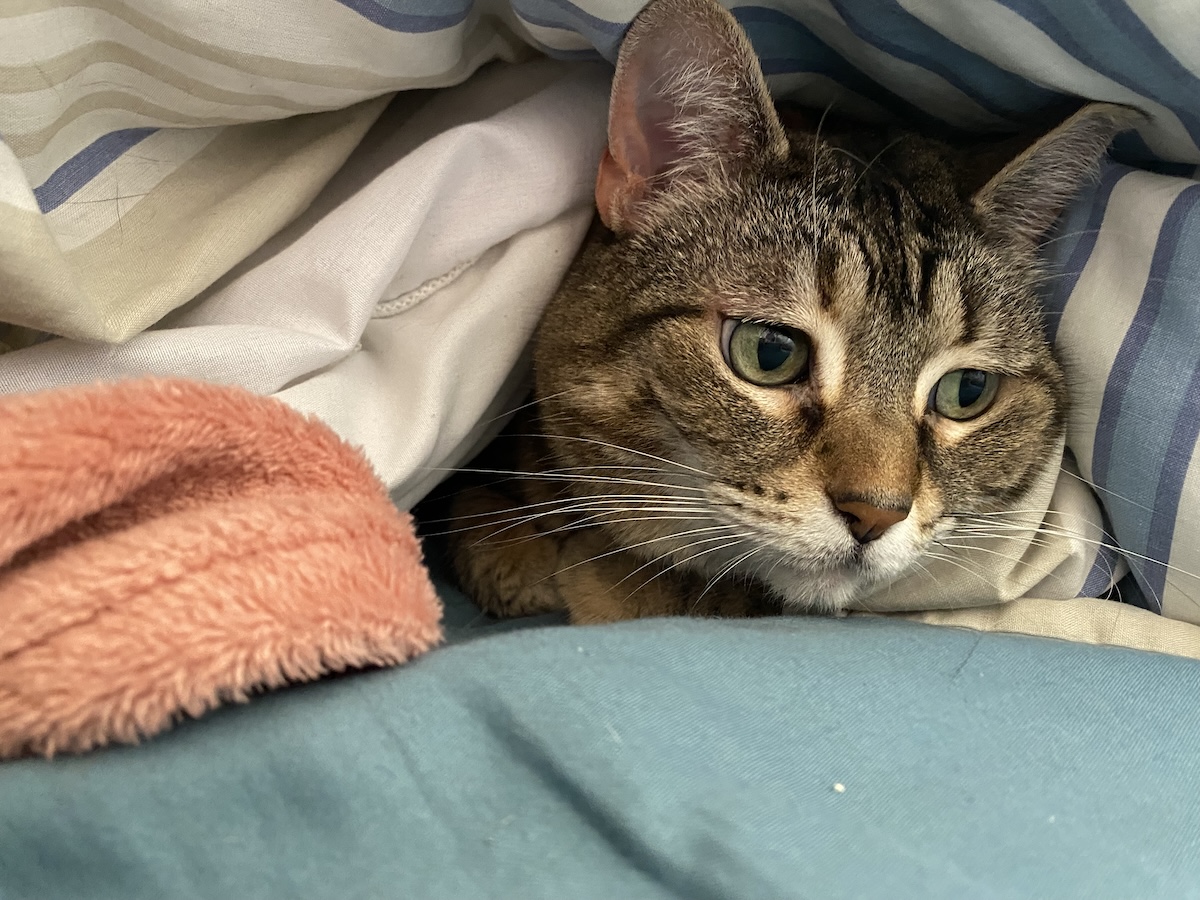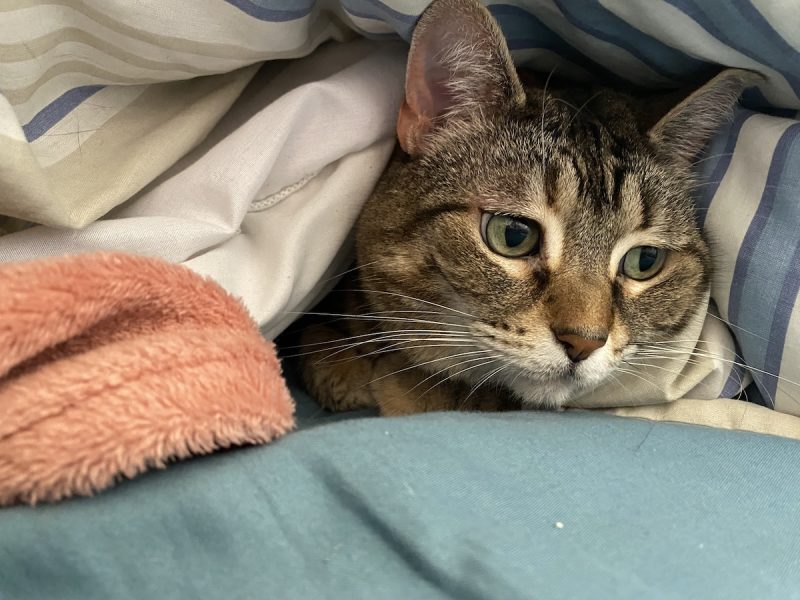Hi, I’m Dr. Lauren! Read my introduction to learn more about me and my two adventurous cats, Pancake and Tiller.
OK, I admit it. I sleep shame Pancake. If you’ve read my previous articles, you’ve likely seen multiple comments about how often she can be found… sleeping. To the point that some days I actually wonder if she does ever leave the sofa during the day, while I’m at work.
A recent podcast by the Huberman Lab, however, made me question if I needed to rethink her hours of time whiled away sleeping.
When we are born, as babies we enter the world as polyphasic sleepers. So what happens, and what is polyphasic sleep?
According to the sleep foundation, polyphasic sleep is sleeping marked by multiple intervals of sleep and wakefulness throughout the 24-hour day.1 Apparently there are even further schedules such as the Uberman, the Everyman, and the Triphasic, if you want to get really nitty gritty.

The Benefits of Polyphasic Sleep
In newborns, our brains lack the capability to discern day and night signals that indicate sleep and wakefulness patterns in adulthood. But adult cats don’t; they are diurnal creatures, so they obviously understand such signals. So why do animals such as cats retain this sleep pattern as they age? In fact, even fire ants participate in polyphasic sleep. So, what are we humans missing?
Some initial studies theorized that predation risk may have meant an evolutionary tendency towards polyphasic sleep. Basically, you were probably less likely to be a larger someone’s snack if you weren’t caught snoozing for 8 hours straight.
But a more recent study refuted this idea, suggesting that predation risk did not correlate with polyphasic sleep; instead they theorized that small animals may simply need more frequent feeding and therefore their sleep schedule evolved to mimic their appetite and energy needs. (No one has yet done a study on whether, given the option of a memory foam mattress, and endless take out deliveries, if cats might elect to change to a monophasic sleep schedule!)

The Drawbacks of Polyphasic Sleep
When done in a human context of using polyphasic sleep to limit non-waking periods to two hours today, at least one review study found no benefits, and actually detrimental effects in physical and mental wellbeing, as well as productivity levels.
But cats aren’t limiting their sleep to two hours, attempting to squeeze every last drop of productivity into their day. Perhaps, a smarter approach would be to take a page from their book: relax more, sleep more, schedule less, and slow down. Unless it’s a red dot, or a feather toy, or a particularly tasty bug, in which case, all bets are off!









